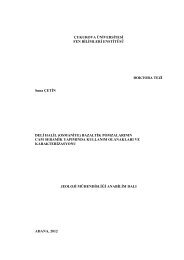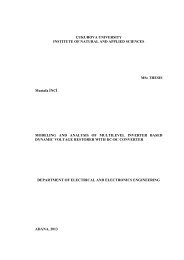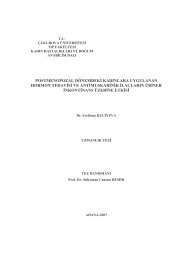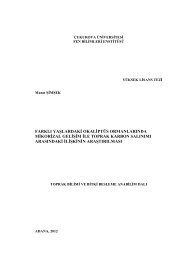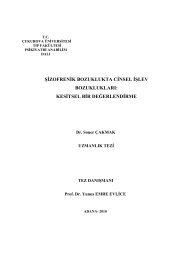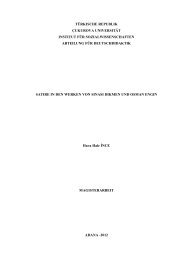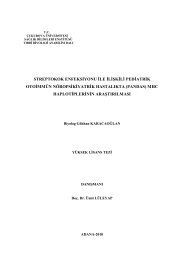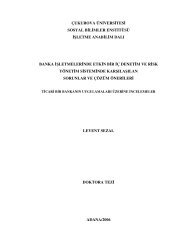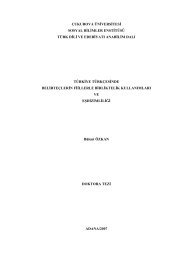Mentagrophytes - Çukurova Üniversitesi
Mentagrophytes - Çukurova Üniversitesi
Mentagrophytes - Çukurova Üniversitesi
Create successful ePaper yourself
Turn your PDF publications into a flip-book with our unique Google optimized e-Paper software.
sorbitol assimilation, salt tolerance, growth in 1 to 7 set of Trichophyton agars<br />
were evaluated. Additionally, the presence of macro- and micro- conidia were<br />
investigated by inoculation into brain-heart infusion agar (BHIA), malt extract<br />
agar (MEA), Lowenstein-Jensen agar (LJ), potatoe dextrose agar (PDA), oat-meal<br />
agar (OA), cornmeal dextrose agar (CMDA), Oxoid chromogenic Candida agar<br />
(OCCA), Christensen urea agar and Trichophyton agars 1 to 7, and by<br />
confronting their performance at days 5, 10 and 15.<br />
It was found that urease reaction had provided more rapid and more<br />
powerful identification at the level of species when urea media prepared in Petri<br />
dishes had been used. Hair perfororation test resulted useful in the differentiation<br />
of the two complexes only in the first ten days. Macroconidia production was more<br />
prevalent in BHIA and LJ media (P < 0.05). Tween opacity, sorbitol assimilation<br />
and salt tolerance tests provided no clue. Additionally, T.rubrum complex<br />
produced red pigments in CMDA and BCPMSG, while T. mentagrophytes complex<br />
produced none. For example, T. raubitschekii was differentiated from T. rubrum<br />
complex by being urease positive, producing red pigments around colonies in<br />
BCPMSG, later shifting pH towards alcaline, being unable to perforate hair,<br />
producing opaque zone around colonies in Tween opacity test in three days,<br />
presenting abundant macro- and micro- conidia in culture. It was also<br />
differentiated from T. mentagrophytes complex by producing red pigments in<br />
CMDA.<br />
It can be concluded that by using over-cited tests in the context of an<br />
algorithm T. rubrum complex could be differentiated from T. mentagrophytes<br />
complex, in addition to the identification of micro-organisms pertaining to both<br />
complexes at the level of species.<br />
Key words: T. rubrum complex, Trichophyon mentagrophytes complex,<br />
laboratory diagnosis<br />
xiv



